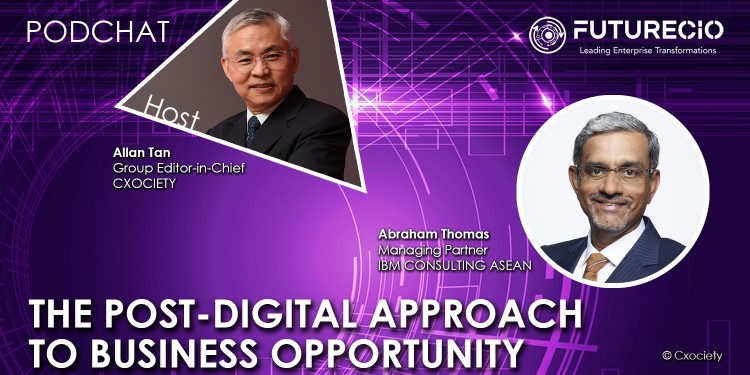Albert Einstein said, “in the midst of every crisis, lies great opportunity.” COVID-19 and its near-universal disruption of economies and societies is a case in point.
Before the pandemic, businesses have not only expanded their commercial footprint but also build communities of partners, suppliers, and customers. Everything was good.
Digital transformation is seen as the next evolution in this ecosystem.
But while digital transformation has received acceptance within business leadership as the way to ensure competitiveness in the digital economy, many organizations were taking a leisurely approach towards transformation. Partly this had to do with the recognition that such a transformation was not only costly but also disruptive to what was back then the way of work.
The disruption of physical supply chains in 2019 caused business leaders to realise the vulnerabilities inherent in a connected ecosystem. But in the race to reboot operations used the opportunity to include resilience and sustainability as part of the transformation agenda.
This realisation is what Abraham Thomas, managing partner, IBM Consulting, ASEAN, alluded to as the virtual enterprise.
A new operating model
“A virtual enterprise is the next generation organizational and operating model that builds upon the drivers of significant technologies and re-evaluates how companies look at their physical assets, infrastructure and talent,” said Thomas.
He noted that it opened the potential for extreme digitalization and extended value change and building new partnerships – the fundamental building blocks of competitive advantage for organizations.
He explained that by leveraging technologies a virtual enterprise can connect different divisions through intelligent workflows and help operate more seamlessly and effectively.
“Outside of the organization, building an ecosystem of partners would become critical and call to the success and purpose of the business, elevating and differentiating the business when competing in this new environment. More partnerships in the wider ecosystem of partners can help use a platform approach to engage an even wider scope of clients, of partners,” he continued.
An ecosystem
At the core of a virtual enterprise is openness. Thomas posited that organizations will not succeed by operating alone. In the post-pandemic economy, the business environment thrives on the ecosystems of partners.
The second requirement is a greater reliance on data science and data analytics as a central element of the decision-making process. A third characteristic is the adoption of intelligent workflows.
“An intelligent workflow cuts across the organizations to enable you to deliver the customer service that you want,” he continued.
To these, he added that it is important to have a human and technology partnership. “Without the human-technology interface it is almost impossible to operate in today’s (COVID-19) environment,” elaborated Thomas.
The final element, according to Thomas, was sustainability. “We need to accept the importance of sustainability if we want to have a planet that is going to be liveable in years and decades to come,” he continued.
“This means changing how we treat waste, how we use waste, and to make sure that we are continuing to have a sustainable environment,” he elaborated.
The CIO of a virtual enterprise
For Thomas, the CIO needs to build a secure, open architecture. Data and information are raw materials for businesses. Putting the data to work depends on the architectural choices organizations make.
“Organizations that embrace hybrid cloud enable connection to ecosystem partners, to a wider marketplace, to clients, to employees, and the ability to operate in any kind of environment, even in a pandemic,” he added.
The CIO is an important catalyst for the organization to embrace the technologies that are relevant and important to operate in this virtual enterprise model. The CIO must curate the right set of technologies that will be important for the organization to be evolved from what I would call a traditional enterprise to a virtual enterprise.
He cautioned, however, that the CIO alone will not able to orchestrate a companywide transformation to a virtual enterprise.
“Technology is not the only driver. It is also the organizational mindset and skillset that has to be transformed together with this technology to be able to move from the traditional enterprise to the virtual enterprise,” he explained.
For Thomas, the CIO is someone who needs to be seated in the highest levels in the organization, encouraging the other leaders: the CEO, CFO, CHRO and all the other C-suite members to understand the availability and use of technology for them to transform the organization become a virtual enterprise.
The starting point of a virtual enterprise
For Thomas, the journey towards a virtual enterprise starts with a mindset shift.
“If you want to operate in this competitive and difficult environment that we have today, you have to have a mindset which says ‘Look, I cannot assume that I will be successful by myself.’”
He also believed that fiefdoms, silos and politics have to give way to enable true collaboration within the enterprise. Upskilling people in the technologies will be important to ensure they are comfortable working and collaborating remotely.
Click on the PodChat player to listen to Thomas dig deeper into the operational value of a virtual enterprise in the context of today’s rapidly expanding business environment, including the role of the CIO as orchestrating the shift to a virtual enterprise.





